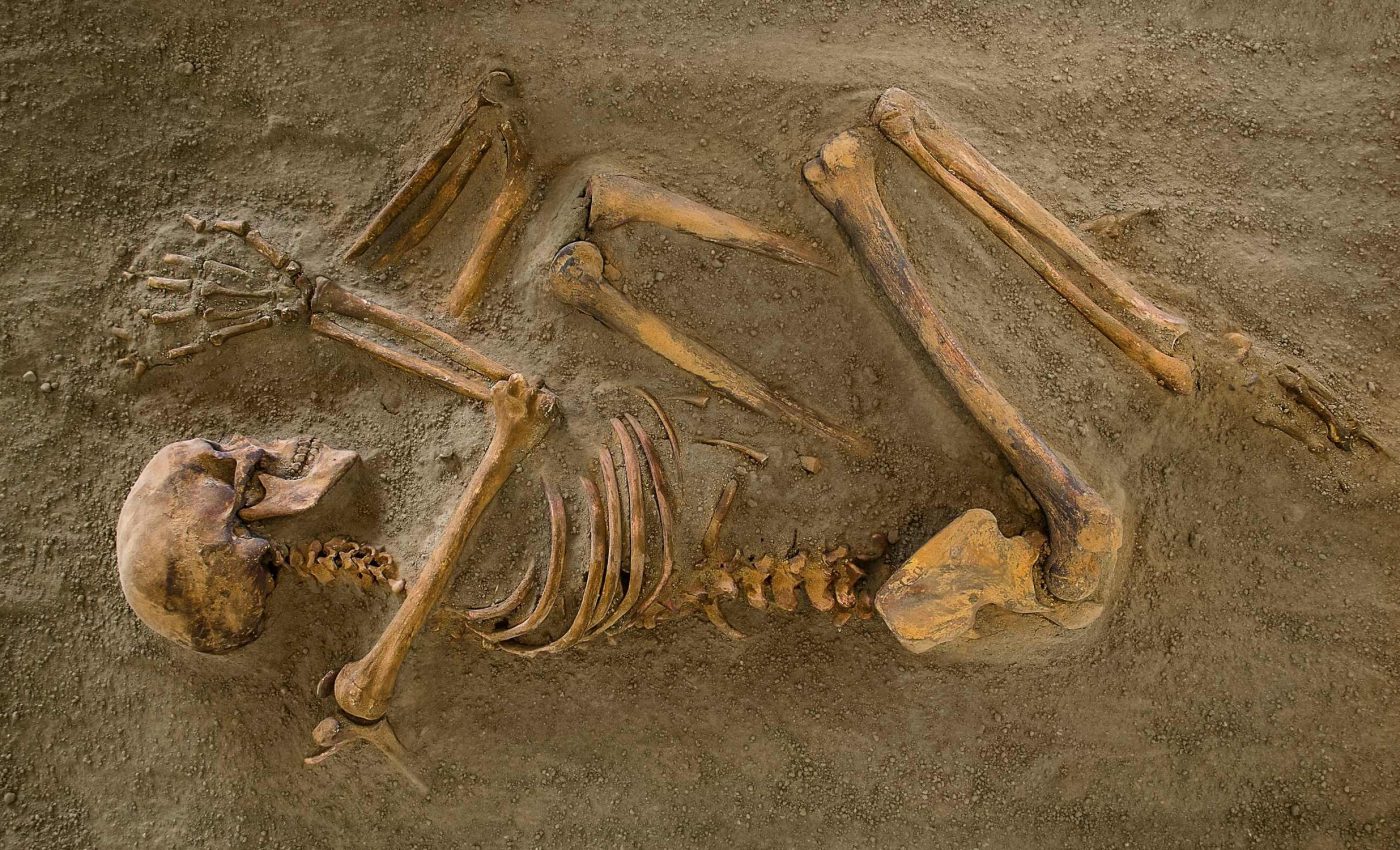
DNA from 9,000-year-old skeletons disproves migratory waves theory from South Africa
DNA from nine prehistoric skeletons, dated as far back as about 9,000 years ago, shows that early inhabitants near the southern Cape Province of South Africa experienced minimal population changes over many millennia.
The site, known as Oakhurst rockshelter, is located about 4 miles (6.4 km) from the coast near the city of George and contained numerous stone-age tools that archaeologists recognize as indicators of shifting cultural practices.
Researchers extracted and analyzed the ancient DNA of individuals from different layers of the site to piece together their genetic profiles.
According to lead investigator Dr. Joscha Gretzinger from the Max Planck Institute for Evolutionary Anthropology, these people displayed a shared genetic heritage that stayed relatively stable until around 1,300 years ago.
South African DNA patterns
Archaeologists once assumed that outside groups had entered the region in multiple migration waves. That assumption has now been challenged by ancient South African DNA from the nine skeletons that span much of the holocene, a geological epoch that began roughly 11,700 years ago.
Each skeleton revealed a highly consistent genetic signature, a pattern that points to continuity across thousands of years.
Evidence of local cultural shifts, like changes in stone tool styles, was long interpreted as proof of new arrivals.
The new data suggest these changes were driven by people already in the region, who adapted and refined new technologies on their own.
Researchers also noted that the skeletons had substantial genetic diversity, hinting that they were part of a larger community that was not isolated.
Pastoralism and farming
Scientists found that the biggest shift happened only about 1,300 years ago. Pastoralism and farming emerged around that time and had a noticeable effect on the local gene pool.
Researchers link this to interactions with groups related to East African herders and Western African farmers.
The outside influences arrived through a slow process, eventually mixing into the indigenous gene pool in the centuries that followed.
“Some southern San in South Africa still preserve this ancient, Pleistocene-derived genetic signature,” noted Dr. Gretzinger.
Data show that modern groups such as the Khomani and Karretjiemense have direct connections to the prehistoric groups of Oakhurst. Ancestry from non-southern African populations entered later, partly through the rise of trade and European colonization.
DNA from South African tools
Archaeologists and geneticists have long debated whether the cultural changes seen in the stone tool record of southern Africa reflected external migration.
This new analysis indicates a rare example of a population that changed its technology and social practices without massive outside genetic input.
Researchers highlight the significance of this finding in understanding human adaptability and self-sufficient development.
Those who study archaeogenetics see a parallel with other parts of the world, where people adopted new practices without large-scale relocations of newcomers.
The story at Oakhurst rockshelter stands out, however, for the sheer length of that stability and the delayed arrival of external gene flow.
DNA from modern descendants
Many of today’s southern African communities show blended ancestries that mask their indigenous genetic backgrounds.
Locals who identify as San or Khoe have the closest ties to ancient foragers, although non-African lineages are now common in many families.
Scientists note that these patterns align with similar admixture events throughout the broader region.
Recent historical upheavals and colonization spurred further genetic mixing in local populations. Despite these disruptions, the new DNA research shows that certain communities maintained direct links to the Oakhurst inhabitants.
People from the southern parts of the country still share strands of DNA that trace to the rockshelter’s earliest occupants.
Prehistory of the southern Cape
The analysis centered on how ancient lines of descent persisted despite changes in tool kits and subsistence strategies.
Researchers concluded that these local transformations were not driven by large outside groups. Radiocarbon tests confirmed the bones belonged to individuals from the early Holocene into more recent periods.
Experts view this result as a valuable point of reference for anthropological inquiries.
The southern Cape’s genetic stability contrasts with multiple upheavals documented in Europe and Asia around the same time. This sets the region apart as a place where technology and cultural identity developed from within.
Connecting the dots
The investigators compared their results with studies of other Stone Age hunter-gatherers.
They discovered a shared feature: pockets of people in Africa often harbored ancient lineages that give a window into early human history. This underscores the region’s importance as a reservoir of deep genetic heritage.
The findings fit well with earlier research that had hinted at long-standing diversity among these populations.
Scientists have used advanced computational methods to estimate ancient shared segments of DNA, thus detecting links among individuals separated by thousands of years.
9,000 years of genetic continuity
The multi-disciplinary approach combined archaeology, genetics, and careful chronological records.
The 9,000-year timeline of genetic continuity highlights the success of local populations in adapting to changing climates and resources without major external inflows.
That record contributes to a broader appreciation of how humans thrive in challenging environments.
Archaeologists and anthropologists plan to expand this work to other sites in southern Africa. They aim to see whether similar stability existed inland or in neighboring regions with different ecological settings.
This research could fill more gaps in the area’s prehistory, illustrating how cultural evolution can occur mostly from within.
The study is published in Nature Ecology & Evolution.
—–
Like what you read? Subscribe to our newsletter for engaging articles, exclusive content, and the latest updates.
Check us out on EarthSnap, a free app brought to you by Eric Ralls and Earth.com.
—–













